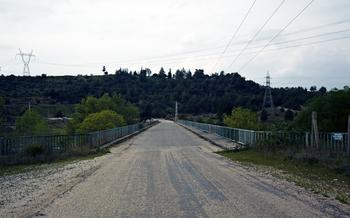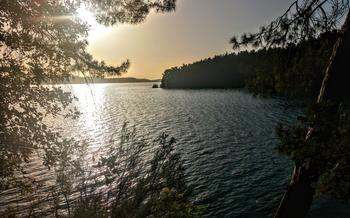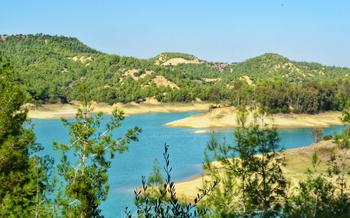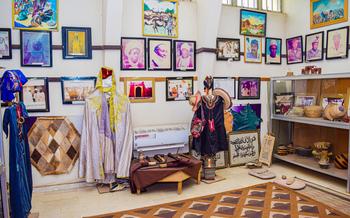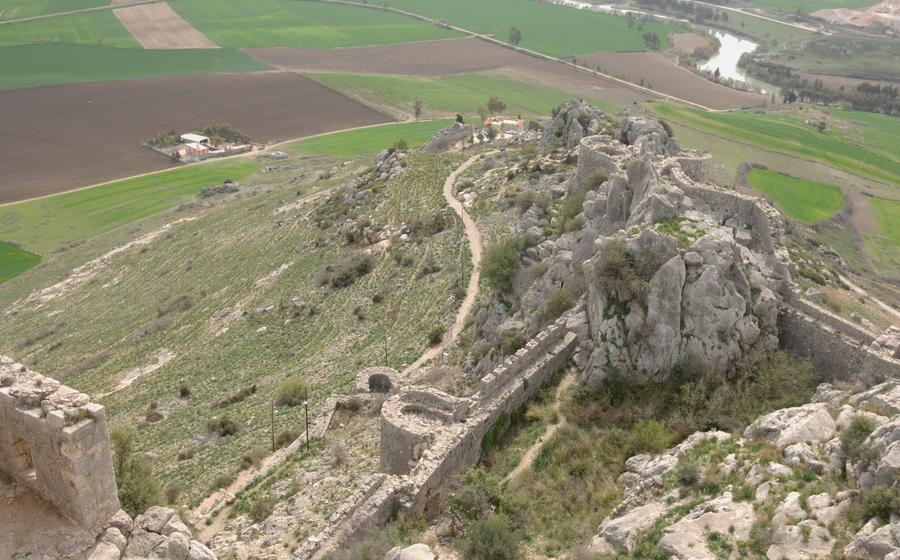
Yilankale (Snake Castle)
- Yilankale (Snake Castle): A Historical Fortress in Adana
- Location and Accessibility
- Admission and Visiting Hours
- Exploring the Castle Grounds
- Historical Significance
- Excavations and Archaeological Discoveries
- Legends and Folklore
- Restoration and Preservation Efforts
- Events and Festivals
- Nearby Attractions
- Food and Dining Options
- Shopping and Souvenirs
- Accommodation and Lodging
- Safety and Precautions
- Insider Tip: Hidden Gems and Secret Spots
Yilankale (Snake Castle): A Historical Fortress in Adana
Adana, a city nestled in southern Turkey, boasts a rich history and cultural legacy. Among its many landmarks, the Yilankale (Snake Castle) stands out as a symbol of resilience and architectural prowess. Erected in the 12th century, the castle has witnessed the rise and fall of empires, serving as a stronghold for various civilizations. Its strategic location on a hilltop overlooking the Seyhan River added to its military significance, making it a formidable defense against invaders.
The castle's architectural design is a testament to the ingenuity of its builders. Constructed using local stone and featuring intricate carvings, Yilankale reflects the architectural styles prevalent during the Middle Ages. Its sturdy walls, fortified towers, and imposing gates hint at the castle's defensive capabilities.
Over the centuries, legends and folklore have intertwined with the history of Yilankale. One popular tale recounts the presence of a giant snake that once guarded the castle, giving rise to its name, which translates to "Snake Castle." Another legend speaks of a hidden treasure buried within the castle's walls, attracting treasure hunters and adventurers alike.
Today, Yilankale stands as a proud remnant of Adana's rich past. Ongoing preservation efforts aim to restore and maintain the castle's grandeur for future generations. As visitors explore its ancient chambers, they are transported back in time, experiencing the echoes of history that linger within these walls.
Location and Accessibility
Yilankale proudly stands in the heart of Adana, a city brimming with culture and history. Nestled atop a hill in the Seyhan district, the castle's strategic position offers breathtaking views of the city and the surrounding landscapes. Reaching this ancient fortress is a breeze, as it lies within easy reach of major transportation hubs.
To embark on your journey to Yilankale, you can hop on the local bus network, which provides convenient connections to the castle from various parts of Adana. Alternatively, taxis are readily available and offer a direct route to the castle's doorstep. If you prefer the freedom of self-exploration, renting a car is an excellent option, allowing you to set your own pace and explore the city at your leisure.
Once you arrive at the base of the hill, a short yet scenic walk leads you to the castle's entrance. As you make your way up the winding path, admire the lush greenery and soak in the tranquility of the surroundings. Ample parking is available nearby, ensuring a hassle-free visit for those arriving by car.
Admission and Visiting Hours
Visiting Yilankale is an immersive experience that takes you back in time. Admission fees are minimal, making it an affordable attraction for travelers. Upon arrival, you can purchase tickets at the entrance gate. The castle is open to the public daily, providing flexibility for your visit.
Operating hours are typically from 8:00 AM to 6:00 PM, allowing ample time to explore the castle grounds and soak in its rich history. Guided tours are available upon request, providing valuable insights into the castle's construction, historical significance, and local legends. Knowledgeable tour guides will accompany you, sharing captivating stories and answering your questions.
Whether you prefer to explore independently or with a guide, Yilankale offers a unique and rewarding experience for history enthusiasts, architecture buffs, and anyone seeking a glimpse into Turkey's rich cultural heritage.
Exploring the Castle Grounds
The castle's interior reveals a captivating layout of fortified walls, towers, and courtyards, inviting visitors to embark on a journey through history. As you step inside, the intricate stonework and defensive architecture tell a tale of strategic prowess and the resilience of past civilizations.
Key areas within the castle include the main courtyard, where soldiers once gathered for formations and ceremonies. The imposing towers offer panoramic views of the surrounding landscape, allowing visitors to imagine the watchful eyes of sentinels scanning the horizon for potential threats.
Another highlight is the castle's intricate network of underground passages and chambers, which provided secret escape routes and storage spaces. These verborgen chambers offer a glimpse into the ingenuity and resourcefulness of the castle's builders.
As you wander through the castle grounds, don't miss the opportunity to capture stunning photographs. The ancient stone walls, framed against the backdrop of the Taurus Mountains, create a picturesque setting for memorable shots.
Historical Significance
Yilankale has played a pivotal role throughout various historical periods. During the Roman era, it served as a strategic military outpost, guarding the vital trade routes that crisscrossed the region. Its formidable walls and elevated position allowed the Romans to maintain control over the surrounding territories.
As the Byzantine Empire succeeded the Romans, Yilankale continued to serve as a critical defensive stronghold. The Byzantines further reinforced the castle's fortifications, adapting them to withstand the changing tactics and weaponry of the time. The castle's strategic significance remained paramount, as it played a crucial role in defending the empire against invading forces from the east.
With the rise of the Armenian Kingdom of Cilicia, Yilankale became a coveted prize, changing hands several times between the Armenians and the Byzantines. The castle's location made it a vital strategic asset, controlling access to the fertile plains of Cilicia and the lucrative trade routes that connected the region to the Mediterranean coast.
Finally, in the 13th century, Yilankale fell under the control of the Mamluks, a powerful Egyptian sultanate. Under the Mamluks, the castle underwent extensive renovations and improvements, transforming it into a magnificent palace-fortress. The Mamluks embellished the castle with intricate carvings, opulent decorations, and lavish gardens, reflecting their wealth and power.
Today, Yilankale stands as a testament to the rich and tumultuous history of Adana. It has witnessed the rise and fall of empires, the clash of civilizations, and the struggles for power that have shaped the region. Its historical significance is immense, and it remains a source of pride and fascination for the people of Turkey.
Excavations and Archaeological Discoveries
Yilankale has been the subject of ongoing excavations and research projects conducted by teams of archaeologists and historians. These efforts have uncovered a wealth of artifacts and findings that shed light on the castle's rich history and significance. Among the notable discoveries are ancient pottery fragments, coins, tools, and weaponry, providing valuable insights into the daily lives and activities of the castle's past inhabitants.
One of the most intriguing discoveries was a series of underground tunnels and chambers hidden beneath the castle's foundations. These concealed spaces are believed to have served as secret passages and storage areas, offering a glimpse into the castle's defensive strategies and hidden secrets. Furthermore, excavations have revealed the remains of an ancient water cistern, suggesting that the castle had an ingenious water management system to sustain its occupants during times of siege or drought.
The findings from the excavations at Yilankale have played a crucial role in enhancing our understanding of the castle's history and evolution. These artifacts and discoveries provide tangible evidence of the diverse civilizations and cultures that have occupied this strategic site throughout the centuries, making Yilankale a treasure trove for archaeologists and history enthusiasts alike.
Legends and Folklore
Yilankale, or "Snake Castle," is steeped in local legends and folklore that have been passed down through generations. One of the most prominent tales is about a giant snake that once inhabited the castle. According to the legend, the snake was so large that it could swallow a whole camel in one bite. The snake terrorized the local villagers until a brave warrior named Ali slayed it with his sword.
Another legend tells the story of a beautiful princess who was imprisoned in the castle. The princess was said to have magical powers and could communicate with animals. She used her powers to help the villagers and protect them from harm.
The castle's name, Yilankale, is also derived from a legend. The word "yilan" means "snake" in Turkish, and it is said that the castle was built on the site of a snake's lair. The snake was considered a sacred creature by the ancient people, and they believed that building the castle on its lair would bring good luck and prosperity.
Restoration and Preservation Efforts
Yilankale's historical importance and architectural significance have made its preservation a top priority for Turkish authorities. In recent years, extensive restoration and conservation projects have been undertaken to safeguard the castle's integrity and ensure its longevity. These projects involve meticulous repairs of damaged walls, fortifications, and towers, using traditional techniques and materials to maintain the castle's original character.
One of the key challenges faced during the restoration process is the need to balance preservation with accessibility. Efforts are made to make the castle accessible to visitors while preserving its historical integrity. This includes the installation of safety features such as railings and staircases, as well as the development of visitor pathways that minimize damage to the site.
The restoration and preservation efforts at Yilankale are crucial for ensuring that this iconic landmark continues to stand as a testament to Turkey's rich history and cultural heritage. By preserving the castle, future generations will have the opportunity to explore and appreciate this architectural marvel, gaining insights into the region's past and its enduring significance.
Events and Festivals
Yilankale, with its enchanting ambiance and historical significance, serves as a captivating venue for various cultural events and festivals throughout the year. These events provide an exceptional opportunity for visitors to immerse themselves in the vibrant local culture and traditions of Adana.
One of the most prominent events held at Yilankale is the annual Yilankale Festival. This festival is a celebration of the castle's rich history and cultural heritage. During the festival, visitors can witness traditional Turkish performances, including folk dances, music concerts, and storytelling sessions. Artisans and craftsmen from the region showcase their skills and sell handmade crafts, souvenirs, and local delicacies.
Another popular event is the Yilankale Night Show. This mesmerizing show combines light and sound effects with live performances to create a captivating experience. Visitors can witness the castle's walls illuminated with vibrant colors, accompanied by a captivating narration that brings the castle's history to life.
These events and festivals at Yilankale offer visitors a unique chance to connect with the local community and gain a deeper appreciation for the cultural tapestry of Adana. By attending these events, visitors can create lasting memories and enjoy an unforgettable experience at this historic fortress.
Nearby Attractions
Yilankale (Snake Castle) stands as a beacon of history and intrigue in Adana, but its allure extends beyond its walls. The city itself is a vibrant tapestry of culture and heritage, beckoning travelers to explore its many other hidden gems.
A short stroll from the castle, visitors can delve into the depths of the Adana Archaeological Museum, a treasure trove of artifacts that narrate the city's rich past. From ancient pottery and intricate mosaics to awe-inspiring sculptures, the museum offers a journey through time, shedding light on civilizations that once flourished in this region.
For those captivated by the artistry of the Orient, the Grand Mosque of Adana (Ulu Cami) beckons with its graceful minarets and ornate facade. Built in the 16th century, this architectural masterpiece epitomizes the fusion of Islamic and Anatolian styles, inviting visitors to marvel at its exquisite tilework and serene ambiance.
Beyond the city's historic core, nature enthusiasts can embark on an adventure to the Seyhan Dam, a picturesque oasis just a stone's throw from Yilankale. Surrounded by lush greenery and sparkling waters, the dam offers a tranquil retreat, ideal for picnicking, fishing, or simply soaking in the picturesque scenery.
Whether seeking cultural immersion, historical enlightenment, or a serene escape into nature, Adana's diverse attractions, each with its own unique charm, promise an unforgettable journey for every traveler.
Food and Dining Options
When visiting Yilankale, be sure to savor the delectable local cuisine. Adana is renowned for its unique flavors and culinary traditions, offering a tantalizing array of dishes to satisfy every palate. From traditional Turkish fare to modern fusion creations, there's something for everyone to enjoy.
For a truly authentic experience, head to one of the charming local restaurants or cafes nestled around the castle. These eateries serve up traditional Turkish dishes prepared with fresh, seasonal ingredients. Indulge in the succulent flavors of Adana kebab, a skewer-grilled minced meat delicacy, or tantalize your taste buds with çiğ köfte, a spicy bulgur salad with raw minced meat.
If you prefer a more relaxed dining experience, take advantage of the many picnic areas scattered throughout the castle grounds. Pack a hamper filled with local delicacies and find a spot to savor your meal while enjoying the breathtaking views.
Don't miss the opportunity to try some of the local specialties and delicacies. Sample the refreshing şalgam suyu, a fermented turnip juice, or sip on a glass of şalgamlı ayran, a unique blend of yogurt, ayran, and şalgam suyu. For a sweet treat, indulge in künefe, a shredded pastry filled with cheese and topped with syrup, or lokum, a Turkish delight made with sugar, starch, and various flavorings.
Remember to embrace the local culture and customs when dining out in Adana. Show your appreciation for the delicious food by saying "afiyet olsun" (may it bring you health) to the chef or your dining companions. And don't be afraid to ask for recommendations or guidance from the friendly locals – they'll be more than happy to share their culinary expertise.
Shopping and Souvenirs
Yilankale and its surroundings offer a vibrant shopping scene for visitors seeking authentic Turkish souvenirs and handicrafts. Strolling through the local markets and shops, you'll find an array of unique items that capture the essence of the region.
Handcrafted souvenirs, such as intricate pottery, colorful textiles, and delicate jewelry, are popular among visitors. These items showcase the skill and artistry of local craftsmen and serve as cherished mementos of your time in Adana.
For those interested in culinary delights, the markets offer an abundance of local specialties, including freshly baked pastries, aromatic spices, and traditional sweets. Indulge in the flavors of Adana by sampling these delectable treats and taking some home to share with friends and family.
Bargaining is a common practice in the markets, so feel free to engage in friendly negotiations to secure the best prices. It's a fun and interactive way to experience the local culture while finding unique treasures.
Remember to be respectful of the vendors and their livelihoods. By supporting local businesses, you contribute to the preservation of traditional crafts and the livelihoods of the people who create them.
Accommodation and Lodging
For those seeking a memorable and authentic experience, traditional Turkish houses or homestays near the castle offer a unique opportunity to immerse oneself in the local culture. These accommodations often feature charming architectural details, cozy interiors, and warm hospitality. Visitors can wake up to the sounds of the city, savor traditional Turkish breakfasts, and interact with local families, gaining insights into their daily lives and customs.
For a more contemporary stay, several hotels and guesthouses are located within easy reach of the castle. These establishments range from budget-friendly options to luxurious accommodations with modern amenities and stunning views of the city. Whether you prefer a cozy bed and breakfast or a full-service hotel, there are plenty of choices to suit every taste and budget.
It's advisable to book your accommodation in advance, especially during peak tourist seasons, to secure the best rates and availability. Online booking platforms or local travel agents can assist you in finding suitable options and comparing prices. Remember to check guest reviews and ratings to ensure a comfortable and enjoyable stay.
Safety and Precautions
When exploring Yilankale, safety should always be a priority. The castle's uneven surfaces and steep stairs require careful navigation to avoid slips and falls. Wear comfortable shoes with good traction to ensure safe footing. Hydration is also essential, especially during hot weather. Bring a water bottle or purchase one from the vendors near the castle entrance.
Sun protection is another important consideration. The castle offers limited shade, so it's advisable to wear sunscreen, a hat, and sunglasses to protect yourself from the sun's harmful rays. Be mindful of your surroundings and avoid climbing on unstable structures or leaning over unprotected edges.
If you have any health concerns or physical limitations, it's best to inform a staff member or tour guide before exploring the castle. They can provide assistance or suggest alternative routes that are more accessible. By following these precautions, you can ensure a safe and enjoyable visit to this historical fortress.
Insider Tip: Hidden Gems and Secret Spots
While exploring Yilankale, take the time to venture beyond the main tourist routes and discover its hidden gems. One such spot is a secluded tower offering breathtaking panoramic views of the surrounding landscape. To find it, look for a narrow staircase tucked away in a corner of the castle walls. The climb may be challenging, but the reward is well worth the effort.
Another hidden gem is a secret chamber said to have been used as a treasury during the castle's heyday. Legends speak of hidden treasures concealed within its walls, waiting to be discovered by those with a keen eye and a sense of adventure.
To uncover even more secrets, engage with the locals. They may share stories and legends passed down through generations, guiding you towards hidden corners and forgotten tales that bring the castle's history to life.

